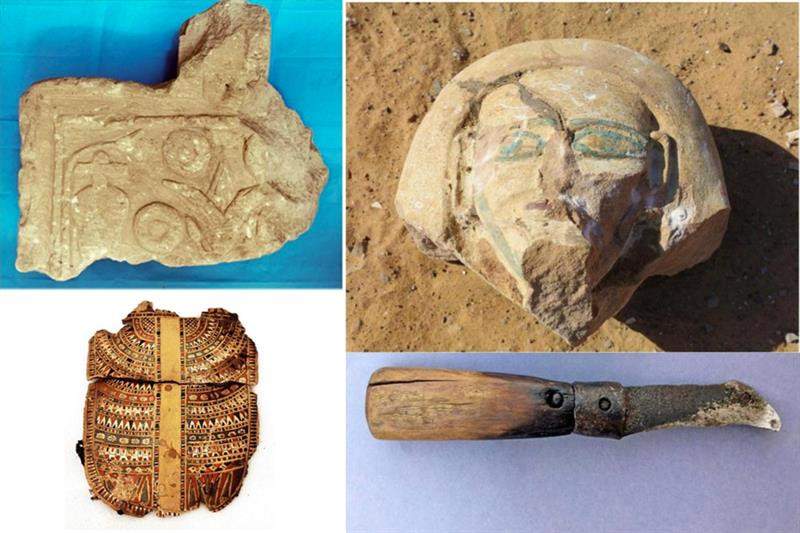Thanks to EIMAWA (Egyptian-Italian Mission at West Aswan ), a joint Italian-Egyptian mission to Aswan by theUniversity of Milan and the Ministry of Antiquities Egyptian directed for the Italian side by Professor Patrizia Piacentini with the deputy direction of Dr. Massimiliana Pozzi and conducted in a very large area surrounding the Mausoleum of the Aga Khan III on the western desert heights, a Greco-Roman tomb excavated in the rock was found.
According to the director general of Aswan and Nubian Antiquities, Abdel-Moneim Said Mahmoud, the tomb is divided into two parts: the first consists of a rectangular building with an entrance built from sandstone blocks covered by a mud-brick vault; the second leads from the entrance to a rectangular courtyard carved into the rock overlooked by four burial chambers.
In the latter about 20 mummies were found, most of them still well preserved.
“It is a mass grave that includes more than one family,” Patrizia Piacentini added. Also found were archaeological artifacts dating back to the Greco-Roman era, such as offering tables, stone panels written in hieroglyphics, a copper necklace engraved in Greek, wooden statues depicting the human-headed bird “Ba” (personification of the life principle), and parts of colored cardboard (material used to construct funerary masks).
Ph.Credit ahramonline
 |
| Egypt, Greco-Roman tomb discovered thanks to joint mission of University of Milan |
Warning: the translation into English of the original Italian article was created using automatic tools. We undertake to review all articles, but we do not guarantee the total absence of inaccuracies in the translation due to the program. You can find the original by clicking on the ITA button. If you find any mistake,please contact us.